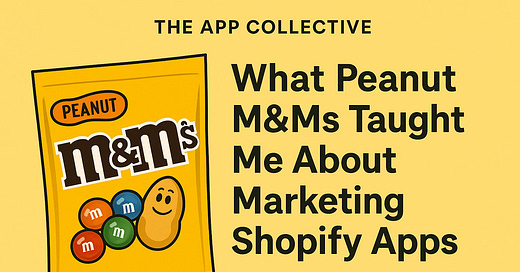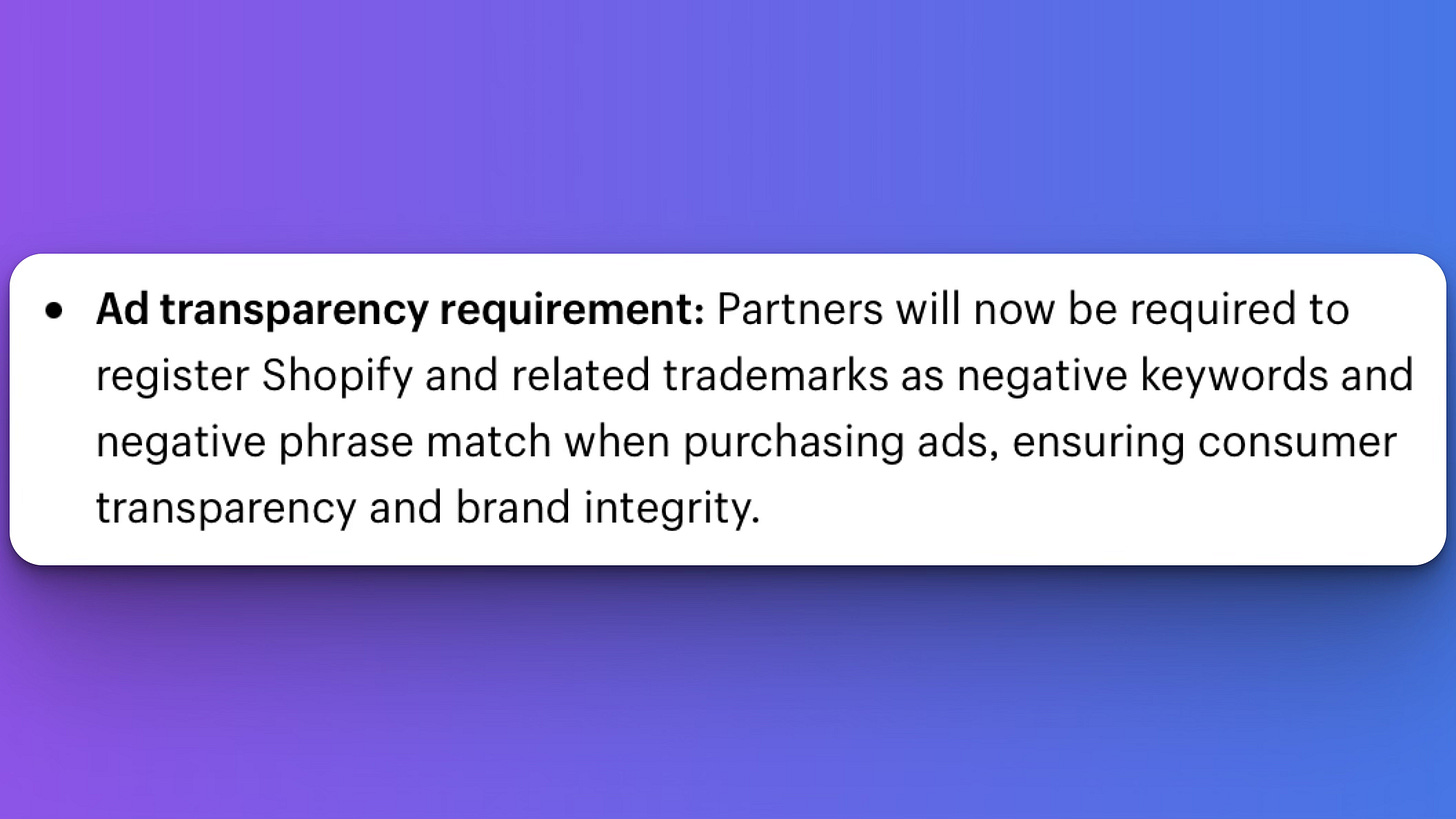I am feeling fun. So today, we’re going to have a little fun in this week’s episode.
I apologize in advance if I ignite your pleasure center by creating a dopamine hit, wrapped in a colorful shell (AKA craving peanut M&Ms) after reading this.
I hope you enjoy this episode. If you do, please leave a comment or like the post on the web version so it gets pushed out to others on Substack who might find this content interesting! Oh, by the way, we charted two weeks ago as #76 Rising in Technology on Substack. Not bad for this little newsletter!
What’s inside:
What Peanut M&Ms Taught Me About Marketing Shopify Apps
A Major Update to Google Ads
An App Listing Tear Down from Shopify Editions
🍫 What Peanut M&Ms Taught Me About Marketing Shopify Apps
A few weeks ago, I found myself staring at a bag of peanut M&Ms in the checkout line. I wasn’t hungry. I didn’t need them. And yet… they ended up in my cart.
Why?
Because peanut M&Ms market themselves better than most Shopify apps.
Here’s what I mean — and how you can apply it to your app marketing strategy.
1. They Know Their USP and They Stick to It
Peanut M&Ms aren’t trying to be artisanal truffles or protein bars. They’re unapologetically fun, crunchy, colorful, and satisfyingly snackable.
Lesson: Be clear about your app’s core value. Don’t try to be everything to everyone. Are you the fastest? The most customizable? The best value for high-volume merchants? Lean into it — and make that messaging unmistakable.
USP stands for Unique Selling Proposition (or sometimes Unique Selling Point). It’s the one thing that makes your product or service stand out from the competition — the clear reason why someone should choose your app over others.
For a Shopify app, your USP might be:
“The pre-order app with hundreds of flexible templates to choose from out of the box to get set up hassle-free in minutes”
“The only subscription app that integrates directly with Shopify Bundles”
“Built for high-volume stores on Shopify Plus to expand your checkout capabilities”
A strong USP is specific, benefits-focused, and easy to remember. It answers:
👉 Why should a merchant pick YOUR app instead of someone else’s?
2. They’re Visually Recognizable
Those bright, primary-colored shells? You can spot them across the store. Consistent branding makes them memorable.
Lesson: Your app listing, ads, and website should feel cohesive. Use the same tone, colors, and visuals across channels so merchants recognize you wherever they find you.
3. They Come in Fun-Sized and Family-Sized Packs
You can grab a mini bag or a giant shareable pouch. It’s the same product — just packaged for different contexts.
Lesson: Not every merchant is at the same stage. Offer pricing tiers or onboarding experiences that scale with their store size. Don’t make a small merchant feel like they’re buying the Costco version when all they need is a snack.
4. They’re Always in the Right Place
Peanut M&Ms show up right when your willpower is at its lowest — at the register, after you’ve shopped and made decisions.
Lesson: Placement matters. Are you visible where merchants are already looking? Like in the Shopify App Store search results, relevant blog content, videos on YouTube, or partner integrations? If not, you're leaving installs on the table.
5. They Get Seasonal
Holiday packaging, limited-edition flavors, Valentine’s Day pinks and reds — M&Ms are experts at refreshing their look without changing the core product.
Lesson: You don’t need a full redesign to stay fresh. Seasonal campaigns, timely feature launches, or even just thematic visuals can keep your app feeling relevant and engaging throughout the year.
So… what does your app have in common with a peanut M&M?
Hopefully more than you thought. The takeaway? Sometimes the smartest marketing strategies aren’t about being the biggest or most complex — they’re about being memorable, well-positioned, and easy to say yes to.
And if all else fails, bribe your next merchant demo with snacks. I hear peanut M&Ms convert well 😉
Shopify Partner Update Affecting Google Ads
For years, it’s been known that you cannot bid on the word “Shopify” in your Google ads. Apps may or may not have been able to use the excuse that they were running broad or phrase match keywords in their campaigns that may have captured the word Shopify. Shopify is OVER IT, so they have decided to clarify that you have to make these words negative in your Google AdWords campaigns.
What do we think about how this might affect your campaigns?
App Listing Tear Down at Shopify Editions
John, Katrina, and I did some live app listing tear downs at Shopify Editons.dev. This week, I’m sharing the Wiser AI Upsell & Cross-sell teardown directly from our talk. I hope you get value out of it. I met with someone this week who said they took pages of notes during this and got a lot of value out of it. I’ll keep sharing them as long as you continue to watch them. Like and comment on the video on YouTube if you do.
Until next time,
Deborah
P.S. What weird or unexpected things have inspired your marketing strategies lately? Hit reply and tell me — I might feature it in a future episode!






So awesome that you got to present at Editions! Been so long since we chatted. Hope you're well!
THANK GOODNESS Shopify is finally doing something to stop people from bidding on their brand name. I've seen numerous apps using Shopify's name outright in their ads. Hopefully they'll get better about enforcement and do something to prevent this so it's a more level playing field for those of us who play by the rules.
Also, idea for your next newsletter. The mastery of Reese's and it's brand extensions to maximize shelf space to block out competitors (Reese's lava, Reese's PBJ, Reese's peanut butter pie, etc.). There are apps in the app store that leverage their brand equity to create single solution apps to extend their brand reach.